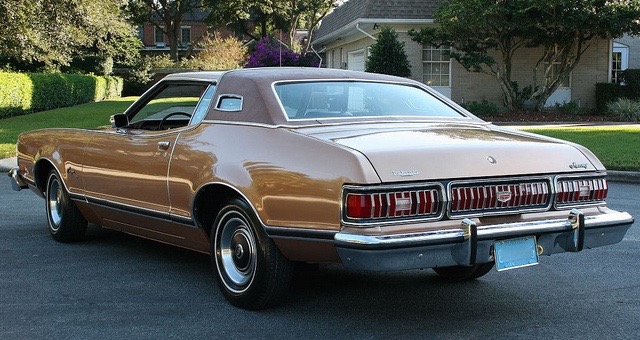Aside from the World War 2 U.S. car production hiatus, Lincoln Continentals were produced through the 1948 model year. But 1949 brought totally restyled Lincolns and Edsel had died in 1943, so Ford leadership was not motivated to continue the line even though stylists had sketched some proposals based on the new Lincoln Cosmopolitan body.
Potential buyers were unhappy with the decision to drop the Continental line and hounded Ford to build new ones. By the early 1950s the company was prosperous again and there was money available to do just that. Edsel's youngest son, William Clay Ford, was made head of the project. As this Wikipedia entry indicates, the new car was called Continental Mark II and was cast as a separate brand, though marketed by Lincoln. It was conceived as a super-luxury car, priced at $10,000 -- around twice the average U.S. household income at the time. Only a coupé was produced, though Ford had a convertible built and some coupé owners later had their cars customized as cabriolets.
So far, I haven't been able to locate suitable examples from the styling competition for the Mark II on the internet. When I find such images, I'll post about them. For now, I'll compare styling of the original 1940 coupé with that of the Mark II.
The Mark II was a lot longer than the original Lincoln Continental. The long hood proportion of the original was retained, but rear overhang was much more extensive. The most "Continental" details carried over were the blanked over rear quarter panels of the passenger compartment and the hint of the rear-mounted spare tire.
If today's acceptance of Retro styling had been in place during the mid-1950s the Mark II might have been styled to look more like the original. Instead, John Reinhart's winning design was a conservative take on contemporary styling practice. Such features include: "frenched" headlights; wraparound windshield; flow-through fender line; low hood; and the long rear overhang. Fortunately, not all trendy items were present. Some of these were: tail fins; chromed designs on the sides; two or three tone paint jobs; and jet fighter details.
From this angle, the passenger compartments have a similar flavor, though the Mark II has a larger rear window (backlight). Its rear wheels are exposed rather than spatted. Signature 1940 Lincoln Continental features included the boxy trunk design and the rear-mounted spare tire in its cover. The Mark II's trunk curves down and the separate spare tire is evoked by a shape encompassing a spare. It's rather like trunk sheet metal was draped over an interior spare tire that was propped up at a forward-leaning angle. In fact, the Mark II's spare tire was inside the trunk and positioned in just that manner, even having a cloth covering to hide it. Of course, that made putting luggage and other items in the trunk more difficult due to its blockage.
The Continental Mark II was not a sales success, only around 3,000 being sold over its two years on the market. It high price was a limiting factor. I think its styling was another contributor. Despite its low stature, the car was massive -- not light and sporting looking like the original was. Moreover its styling was dull, boring. Making it look very mid-50s with fins and multiple paints might not have worked either. The best solution from today's perspective would have been a shorter (but not too short) car with more Retro hints. But that might not have sold well either, given buyer expectations in those stylistically flamboyant times.























































